

A 'Dictionary' is a Collection that can also hold multiple values in 'Key' and 'Value' pairs.In the 'Dictionary', the elements are unordered, unindexed, changeable and doesn't allow duplicate values.
You can think of a 'Dictionary' like an actual English Dictionaries. Where you search for a word and you get its explanation.
The declaration of a 'Dictionary' is also quite simple. You can place the multiple values inside braces '{ }' in the form of 'Key' and 'Value' pairs.
Just imagine the 'Key' to be the word you are going to search in the English Dictionary.And the 'Value' is the explanation you find in it.
x = {
5 : "Is a Number",
"John": "Is a Name",
"Python": "Is a Language"
}
print(x)
So, in the above code we have created a 'Dictionary' using square braces '{ }'. And the values are represented in 'Key' and 'Value' pairs.
The 'Key' is a number or a String and in the value we have provided its explanation(Somewhat like the English Dictionary).
i.e. We know that the first element '5' is a number. So, in the 'Key', we have put the number '5' and in its value, we have put the explanation, 'Is a Number'. Same logic is applicable for the other two 'Keys', 'John' and 'Python'.
A 'Key' and 'Value' is separated by ':'.
x = {
5 : "Is a Number",
"John": "Is a Name",
"Python": "Is a Language"
}
And initialised to the variable 'x'.

And in the next line we have printed the 'Dictionary' using the print statement.
Now, if we see the output,
x = {
5 : "Is a Number",
"John": "Is a Name",
"Python": "Is a Language"
}
for i in x:
print(i)
Similarly, in the above code we have created a 'Dictionary' using braces '{ }' and 'Key' and 'Value' pairs.
x = {
5 : "Is a Number",
"John": "Is a Name",
"Python": "Is a Language"
}
And initialised to the variable 'x'.
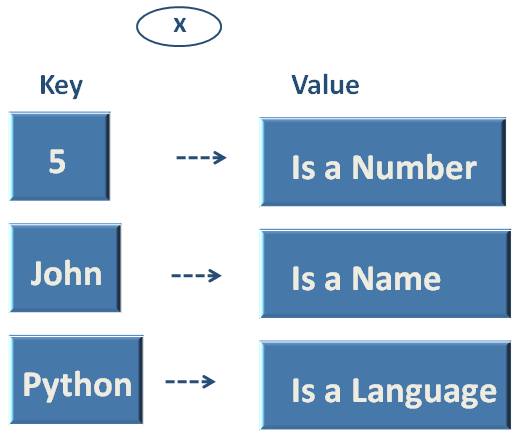
In the next line we have used the 'for loop' to Iterate through the 'Dictionary'.
for i in x:
print(i)
As we know, there is a 'Key' and 'Value' pair in a 'Dictionary'. But we are just getting the 'Keys'
Let us understand it in the iterations of 'for' loop,
In the first Iteration the first 'Key' of the 'Dictionary' 'x' (i.e. The key '5') is taken and put into the variables 'i'.

And the print statement, prints the value of 'i'(i.e. The key).
Similarly, in the second Iteration the second 'Key' of the 'Dictionary' 'x' (i.e. The key 'John') is taken and put into the variables 'i'.

And the print statement, prints the value of 'i'(i.e. The key).
Similarly, in the third Iteration the third 'Key' of the 'Dictionary' 'x' (i.e. The key 'Python') is taken and put into the variables 'i'.

And the print statement, prints the value of 'i'(i.e. The key).
So, we have seen how to get the 'Keys'. Now, let us see how can we get the corresponding 'Value' associated with that 'Key'.
It is just like searching a word in an English dictionary and get its corresponding value.
x = {
5 : "Is a Number",
"John": "Is a Name",
"Python": "Is a Language"
}
for i in x:
print("The value for the key ",i," is ",x[i])
Similarly, in the above code we have created a 'Dictionary' using braces '{ }' and 'Key' and 'Value' pairs.
x = {
5 : "Is a Number",
"John": "Is a Name",
"Python": "Is a Language"
}
And initialised to the variable 'x'.

In the next line we have used the 'for loop' to Iterate through the 'Dictionary'.
for i in x:
print("The value for the key ",i," is ",x[i])
As we know, there is a 'Key' and 'Value' pair in a 'Dictionary'. And in each Iteration, we are fetching the 'Value' for a particular 'Key'.
Let us understand it in the iterations of 'for' loop,
In the first Iteration the first 'Key' of the 'Dictionary' 'x' (i.e. The key '5') is taken and put into the variables 'i'.

Then in the print statement, we have used the 'Key' (i.e. '5') to get the value associated to it 'x[i]')
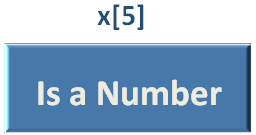
Where,

And the print statement,
Prints the 'Key' and 'Value'.
Similarly, in the second Iteration the second 'Key' of the 'Dictionary' 'x' (i.e. The key 'John') is taken and put into the variables 'i'.
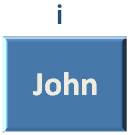
Then in the print statement, we have used the 'Key' (i.e. 'John') to get the value associated to it 'x[i]')
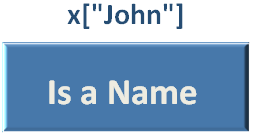
And the print statement,
Prints the 'Key' and 'Value'.
Similarly, in the third Iteration the third 'Key' of the 'Dictionary' 'x' (i.e. The key 'John') is taken and put into the variables 'i'.
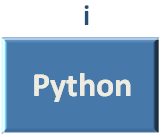
Then in the print statement, we have used the 'Key' (i.e. 'Python') to get the value associated to it 'x[i]')

And the print statement,
Prints the 'Key' and 'Value'.
x = {
5 : "Is a Number",
"John": "Is a Name",
"Python": "Is a Language"
}
for i,j in x.items():
print(i, j)
Similarly, in the above code we have created a 'Dictionary' using braces '{ }' and 'Key' and 'Value' pairs.
x = {
5 : "Is a Number",
"John": "Is a Name",
"Python": "Is a Language"
}
And initialised to the variable 'x'.

In the next line we have used the 'for loop' to Iterate through the 'Dictionary'.
for i,j in x.items():
print(i, j)
Now, since there is a 'Key' and 'Value' pair in a 'Dictionary', two variables 'i' and 'j' are used. 'i' to hold the key and 'j' to hold the value.
And to get all the elements of the 'Dictionary', the 'items( )' Function is used.
Now, if we see the iterations of 'for' loop,
In the first Iteration the first value of the 'Dictionary' 'x' (i.e. The key '5' and the value 'Is a Number') is taken and put into the variables 'i' and 'j'.

And the print statement, prints the value of 'i'(i.e. The key) and 'j'(i.e. The value).
Similarly, in the second Iteration the second value of the 'Dictionary' 'x' (i.e. The key 'John' and the value 'Is a Name') is taken and put into the variables 'i' and 'j'.
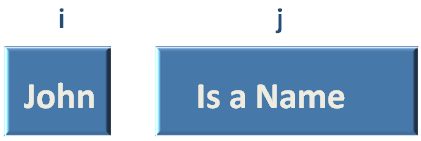
And the print statement, prints the value of 'i'(i.e. The key) and 'j'(i.e. The value).
Similarly, in the third Iteration the third value of the 'Dictionary' 'x' (i.e. The key 'Python' and the value 'Is a Language') is taken and put into the variables 'i' and 'j'.

And the print statement, prints the value of 'i'(i.e. The key) and 'j'(i.e. The value).
So far, we have seen, how to access all the elements of a 'Dictionary'. i.e. Both the 'Key' and 'Value'.
Now, what if we want to access just the 'Key' or the 'Value'. Let us see in the next example.
x = {
5 : "Is a Number",
"John": "Is a Name",
"Python": "Is a Language"
}
for i in x.keys():
print(i)
So, in the above code we have created a 'Dictionary' using braces '{ }' and 'Key' and 'Value' pairs.
x = {
5 : "Is a Number",
"John": "Is a Name",
"Python": "Is a Language"
}
And initialised to the variable 'x'.
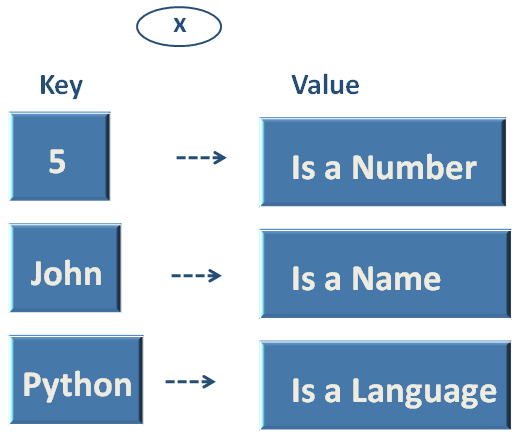
In the next line we have used the 'for loop' to Iterate through the 'Dictionary' just to get the 'Keys'.
for i in x.keys():
print(i)
Now, since there is a 'Key' and 'Value' pair in a 'Dictionary', we have used the 'keys( )' Function, that will only print the 'Keys' and not the 'Values'.
And if you see the Output, just the 'Keys' are printed.
Next, let us see, how can we access only 'Values'.
x = {
5 : "Is a Number",
"John": "Is a Name",
"Python": "Is a Language"
}
for i in x.values():
print(i)
So, in the above code we have created a 'Dictionary' using braces '{ }' and 'Key' and 'Value' pairs.
x = {
5 : "Is a Number",
"John": "Is a Name",
"Python": "Is a Language"
}
And initialised to the variable 'x'.

In the next line we have used the 'for loop' to Iterate through the 'Dictionary' just to get the 'Values'.
for i in x.values():
print(i)
Now, since there is a 'Key' and 'Value' pair in a 'Dictionary', we have used the 'values( )' Function, that will only print the 'Values' and not the 'Keys'.
And if you see the Output, just the 'Values' are printed.
Next, let us see, how to access the elements of the Dictionary.